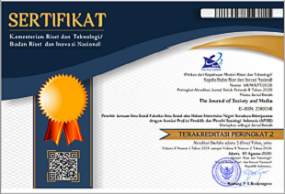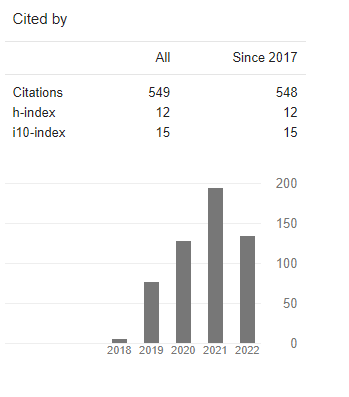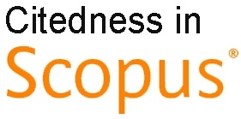Aesthetic Clinic and Beauty Myths in Indonesia: Discourse Analysis of Beauty Representation in Instagram Accounts
DOI:
https://doi.org/10.26740/jsm.v7n2.p514-545Keywords:
aesthetic clinic, beauty myth, beauty representation, cyberfeminism, critical discourseAbstract
This study analyzed beauty myths on Instagram accounts of three aesthetic clinics in Indonesia using Sara Mills' critical discourse analysis. Results showed that First, the women were characterized as an object and became the victims, and beauty standards were reconstructed and reproduced by the subjects, namely the Instagram accounts of @dermaster_id, @ertosbeautyclinic, and @natashaskincare aesthetic clinics. Women objectification could not be separated from the existing beauty myth. Second, there were two categories of beauty representations formed in the three Instagram accounts, namely men's beauty representation that consisted of smooth faces, young looks, and firm jaws, and women's beauty representations that consisted of thin cheeks, firm jaw, firm skin, smooth, acne-free, attractive skin, glass skin, and slim, and halal beauty. The study is expected to enrich the repertoire of social science, especially sociology, and develop research on the sociology of the body, feminism study, and the sociology of gender and media.
References
Foucault, Michel. 2004. The Archeology of Knowledge. London: Routledge.
Gamble, Sarah. 2010. Pengantar Memahami Feminisme. Yogyakarta: Jalasutra.
Hall, Kira. 1996. CyberFeminism. Vol. 39. edited by Susan C. Herring. Amsterdam/Philadelphia: Spinifex Press.
Mills, Sara. 2011. Gender Matters : Feminist Linguistic Analysis. Equinox Publishing Limited.
Mills, Sara. 2016. Feminist Stylistics.
Prabasmoro, Aquarini Priyatna. 2006. Kajian Budaya Feminis (Tubuh, Sastra, Dan Budaya Pop). Yogyakarta: Jalasutra.
Reed, T. V. 2014. Digitized Lives: Culture, Power, and Social Change in the Internet Era.
Rogers, Mary F. 1996. Barbie Culture Ikon Budaya Konsumerisme. Yogyakarta: Bentang Budaya.
Synnott, Anthony. 1993. The Body Social: Symbolism, Self and Society. London and New York: Routledge.
Synnott, Anthony. 2002. Tubuh Sosial. Simbolisme, Diri, Dan Masyarakat. 1st ed. edited by M. H. Abid. Yogyakarta: Jalasutra.
Walby, Sylvia. 1987. Patriarchy at Work : Patriarchal and Capitalist Relations in Employment. University of Minnesota Press.
Walby, Sylvia. 1991. Theorizing Patriarchy. B. Blackwell.
Walby, Sylvia. 1997. Gender Transformations. Routledge.
Walby, Sylvia. 2009. Globalization and Inequalities : Complexity and Contested Modernities. SAGE Publications.
Walby, Sylvia. 2011. The Future of Feminism. Polity Press.
Wolf, Naomi. 2002. The Beauty Myth: How Images of Beauty Are Used Against Women. New York: Harper Collins Publisher.
Downloads
Published
How to Cite
Issue
Section
License
Copyright (c) 2023 The Journal of Society and Media

This work is licensed under a Creative Commons Attribution 4.0 International License.
 Abstract views: 923
,
Abstract views: 923
, PDF Downloads: 464
PDF Downloads: 464












